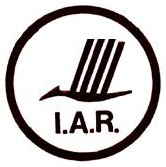|
Savoia-Marchetti SM.62
The Savoia-Marchetti SM.62 was an Italian single-engine maritime patrol flying boat produced from 1926. It served with the ''Regia Aeronautica'' and with a number of foreign users, and was licence-produced in Spain and the Soviet Union. Some of the Spanish aircraft were still in service during the Spanish Civil War Design and development The SM.62 flying boat was one of the main successes of Savoia-Marchetti, evolved from the SM.59 which first flew in 1925. The single-engine, single-spar wing, wooden biplane aircraft was powered by a single Isotta Fraschini Asso 500 R.I., engine mounted between the upper and the lower wings, and drove a pusher propeller. It had a wingspan of , a maximum takeoff weight of including fuel, bombs and four crew, and entered production in 1926. Apart from the two machine guns in the aft and forward fuselage, both mounted in uncovered positions, the possibility of fitting an Oerlikon 20 mm cannon was explored, but never put into service. The progre ... [...More Info...] [...Related Items...] OR: [Wikipedia] [Google] [Baidu] |
Savoia-Marchetti
SIAI-Marchetti was an Italian aircraft manufacturer primarily active during the interwar period. History The original company was founded during 1915 as SIAI (''Società Idrovolanti Alta Italia'' - Seaplane Company of Upper Italy). As suggested by its name, the firm initially specialised in the manufacture of seaplanes, the vast majority of which were intended for the Italian armed forces. Perhaps its most prominent early aircraft was the SIAI S.16, a seaplane that had been configured to perform both aerial reconnaissance and bomber roles, but also proved itself quite capable of long-distance flights. During 1925, Italian aviator Francesco de Pinedo of the ''Regia Aeronautica'' (Italian Royal Air Force) used an SIAI S.16''ter'' he named ''Genariello'' for a record-setting flight from Rome to Australia and Tokyo to demonstrate his idea that seaplanes were superior to landplanes for long-distance flights. Having departed Rome on 21 April, Pinedo and his mechanic, Ernesto Campanelli ... [...More Info...] [...Related Items...] OR: [Wikipedia] [Google] [Baidu] |
Industria Aeronautică Română
Industria Aeronautică Română (IAR) (now IAR S.A. Brașov) or Romanian Aeronautic Industry in English, is a Romanian aerospace manufacturer. It is based in Ghimbav, near Brașov, Romania. IAR was founded in 1925 with the aid of the Romanian government, which sought to reduce reliance on foreign companies to supply the Royal Romanian Air Force with aircraft and associated equipment. In addition to its designs, the company built numerous foreign-designed aircraft under license as well. IAR produced a low-wing all-metal monoplane, the IAR 80, during the Second World War; this combat aircraft was extensively used by the nation during the conflict. During the Cold War era, the company branched out into helicopters, securing licensing agreements with France for their designs in the field, leading to the IAR 316 and IAR 330. In 2000, IAR partnered with the multinational helicopter manufacturer Eurocopter Group to create the ''Eurocopter Romania'' joint venture company. Presently, the ... [...More Info...] [...Related Items...] OR: [Wikipedia] [Google] [Baidu] |
Savoia-Marchetti S
SIAI-Marchetti was an Italian aircraft manufacturer primarily active during the interwar period. History The original company was founded during 1915 as SIAI (''Società Idrovolanti Alta Italia'' - Seaplane Company of Upper Italy). As suggested by its name, the firm initially specialised in the manufacture of seaplanes, the vast majority of which were intended for the Italian armed forces. Perhaps its most prominent early aircraft was the SIAI S.16, a seaplane that had been configured to perform both aerial reconnaissance and bomber roles, but also proved itself quite capable of long-distance flights. During 1925, Italian aviator Francesco de Pinedo of the ''Regia Aeronautica'' (Italian Royal Air Force) used an SIAI S.16''ter'' he named ''Genariello'' for a record-setting flight from Rome to Australia and Tokyo to demonstrate his idea that seaplanes were superior to landplanes for long-distance flights. Having departed Rome on 21 April, Pinedo and his mechanic, Ernesto Campanelli ... [...More Info...] [...Related Items...] OR: [Wikipedia] [Google] [Baidu] |
Isotta Fraschini Asso 500
Iseult (), alternatively Isolde () and other spellings, is the name of several characters in the legend of Tristan and Iseult. The most prominent is Iseult of Ireland, the wife of Mark of Cornwall and the lover of Tristan. Her mother, the queen of Ireland, is also named Iseult. The third is Iseult of the White Hands, the daughter of Hoel of Brittany and the sister of Kahedin. Name Her name is variably given as Iseult, Isolde, Yseult, Ysolt, Isode, Isoude, Iseut, Isaut (Old French), Iosóid (Irish), Esyllt (Welsh), Ysella (Cornish), Isolda (Portuguese, Spanish), Izolda (Serbian) and Isotta (Italian), among others. The oldest source, Béroul's 12th-century romance, spells her name as ''Yseut'' or ''Iseut''. The etymology is uncertain, with most sources linking it to the Old High German words ''īs'' ("ice") and ''hiltja'' ("battle"). Other writers derive it from a Brythonic *''Adsiltia'', "she who is gazed upon." Iseult of Ireland The Irish princess, Iseult of Ireland is the ... [...More Info...] [...Related Items...] OR: [Wikipedia] [Google] [Baidu] |
Soviet Naval Aviation
Soviet Naval Aviation (AV-MF, for ''Авиация военно-морского флота'' in Russian, or ''Aviatsiya voyenno-morskogo flota'', literally "aviation of the military maritime fleet") was the naval aviation arm of the Soviet Navy. Origins The first naval aviation units in Russia were formed in 1912–1914 as a part of the Baltic Fleet and the Black Sea Fleet. During World War I, the hydroplane units were used in the Black Sea for conducting aircraft reconnaissance, bombing and firing at coastal and port installations and enemy ships, and destroying submarines and enemy aircraft on the airfields. Civil War and Interwar Period The regular Soviet naval aviation units were created in 1918. They participated in the Russian Civil War, cooperating with the ships and the army during the combats at Petrograd, on the Baltic Sea, the Black Sea, the Volga, the Kama River, Northern Dvina and on the Lake Onega. The newborn Soviet Naval Air Force consisted of only 76 obso ... [...More Info...] [...Related Items...] OR: [Wikipedia] [Google] [Baidu] |
Spanish Air Force
, colours = , colours_label = , march = Spanish Air and Space Force Anthem , mascot = , anniversaries = 10 December , equipment = , equipment_label = , battles = * Rif War * Spanish Civil War * Ifni War * Yugoslav wars * Kosovo War * Libyan Civil War , decorations = , battle_honours = , battle_honours_label = , flying_hours = , website = , commander1 = King Felipe VI , commander1_label = Commander-in-Chief (Captain General) , commander2 = Air General Javier Salto , commander2_label = Chief of Staff , commander3 = , commander3_label = , commander4 = , commander4_label = , commander5 ... [...More Info...] [...Related Items...] OR: [Wikipedia] [Google] [Baidu] |
Spanish Republican Air Force
The Spanish Republican Air Force was the air arm of the Armed Forces of the Second Spanish Republic, the legally established government of Spain between 1931 and 1939. Initially divided into two branches: Military Aeronautics ('' Aeronáutica Militar'') and Naval Aeronautics ( ''Aeronáutica Naval''), the Republican Air Force became the Air Forces of the Spanish Republic, ''Fuerzas Aéreas de la República Española'' (FARE), also known as ''Arma de Aviación'', after it was reorganized following the restructuring of the Republican Armed Forces in September 1936, at the beginning of the Spanish Civil War. This defunct Air Force is largely known for the intense action it saw during the Civil War, from July 1936 till its disbandment in 1939. The Spanish Republican Air Force was popularly known as ''"La Gloriosa"'' (The Glorious One). But, according to some historians, the command structure of the Spanish loyalist forces was marred by ineptitude and lack of decision-making througho ... [...More Info...] [...Related Items...] OR: [Wikipedia] [Google] [Baidu] |
Royal Romanian Naval Aviation
The Romanian Naval Aviation was the air arm of the Royal Romanian Navy. It was founded in 1920 as ''Escadrila de hydroplane'' (Seaplane Squadron) and operated Hansa-Brandenburg W.29 floatplanes and Hansa-Brandenburg FB flying boats. These were followed by native-built aircraft and imports from Italy ( flying boats) and Germany ( floatplanes), resulting, by the time of the Second World War, in a sizable and active force of over 70 watercraft. Currently the Romanian Naval Aviation consists of ''Grupul 256 Elicoptere'' (256th Helicopter Group) equipped with IAR 330 Naval helicopters. History The first Romanian seaplane squadron was founded in 1920 by Royal Decree no. 2256 bis, from 15 May 1920, under the command of Captain Constantin Negru. It was named ''Escadrila de hydroplane'' and consisted of 12 Hansa-Brandenburg W.29 floatplanes and Hansa-Brandenburg FB flying boats. In 1925 four native-built RAS-1 Getta training flying boats were added. In 1921, the base of the naval aviati ... [...More Info...] [...Related Items...] OR: [Wikipedia] [Google] [Baidu] |
Imperial Japanese Navy Air Service
The was the Naval aviation, air arm of the Imperial Japanese Navy (IJN). The organization was responsible for the operation of naval aircraft and the conduct of aerial warfare in the Pacific War. The Japanese military acquired their first aircraft in 1910 and followed the development of air combat during World War I with great interest. They initially procured European aircraft but quickly built their own and launched themselves onto an ambitious aircraft carrier building program. They launched the world's first purpose-built aircraft carrier, , in 1922. Afterwards they embarked on a conversion program of several excess battlecruisers and battleships into aircraft carriers. The IJN Air Service had the mission of national air defence, deep strike, naval warfare, and so forth. It retained this mission to the end. The Pilot training in the Imperial Japanese Navy, Japanese pilot training program was very selective and rigorous, producing a high-quality and long-serving pilot corps ... [...More Info...] [...Related Items...] OR: [Wikipedia] [Google] [Baidu] |
Bomber
A bomber is a military combat aircraft designed to attack ground and naval targets by dropping air-to-ground weaponry (such as bombs), launching aerial torpedo, torpedoes, or deploying air-launched cruise missiles. The first use of bombs dropped from an aircraft occurred in the Italo-Turkish War, with the first major deployments coming in the World War I, First World War and World War II, Second World War by all major airforces causing devastating damage to cities, towns, and rural areas. The first purpose built bombers were the Italy, Italian Caproni Ca 30 and United Kingdom, British Bristol T.B.8, both of 1913. Some bombers were decorated with nose art or victory markings. There are two major classifications of bomber: strategic and tactical. Strategic bombing is done by heavy bombers primarily designed for long-range bombing missions against strategic targets to diminish the enemy's ability to wage war by limiting access to resources through crippling infrastructure or reduci ... [...More Info...] [...Related Items...] OR: [Wikipedia] [Google] [Baidu] |
Reconnaissance
In military operations, reconnaissance or scouting is the exploration of an area by military forces to obtain information about enemy forces, terrain, and other activities. Examples of reconnaissance include patrolling by troops (skirmishers, long-range reconnaissance patrol, U.S. Army Rangers, cavalry scouts, or military intelligence specialists), ships or submarines, crewed or uncrewed reconnaissance aircraft, satellites, or by setting up observation posts. Espionage is usually considered to be different from reconnaissance, as it is performed by non-uniformed personnel operating behind enemy lines. Often called recce (British, Canadian and Australian English) or recon (American English), the word for this activity has at its root the associated verb ''reconnoitre'' or ''reconnoiter''. Etymology The word from the Middle French ''reconoissance''. Overview Reconnaissance conducted by ground forces includes special reconnaissance, armored reconnaissance, amp ... [...More Info...] [...Related Items...] OR: [Wikipedia] [Google] [Baidu] |




.jpg)
